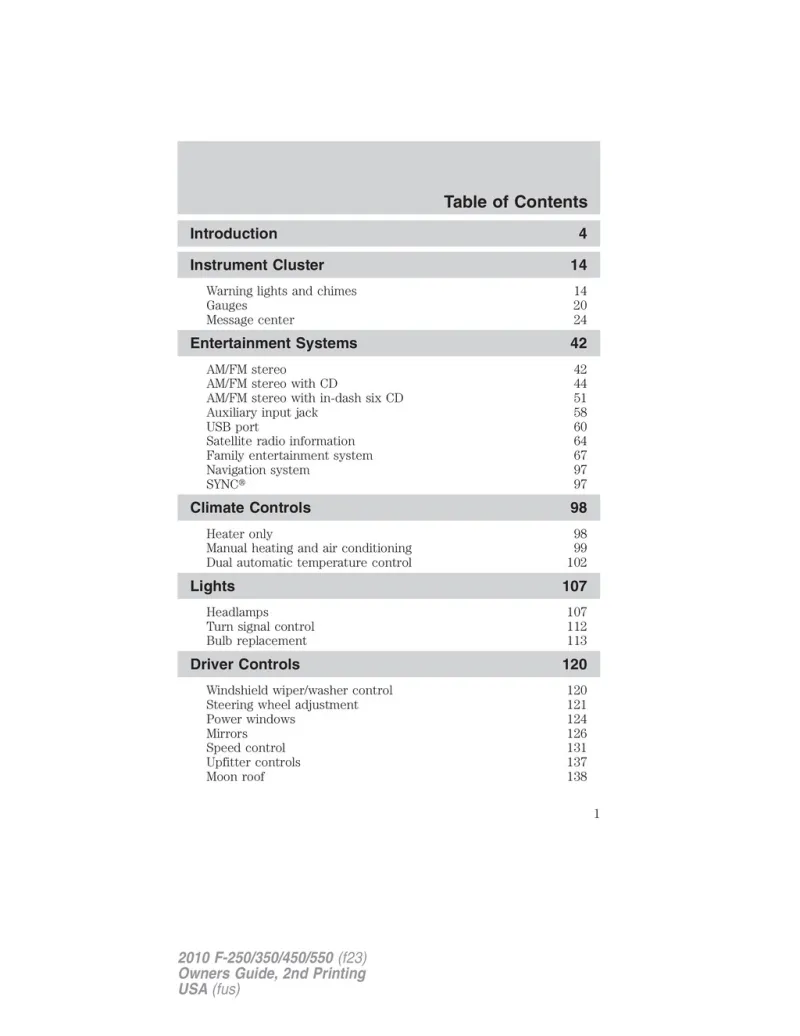2010 Ford F550 Owner's Manual

Table of Contents
2010 Ford F550 Overview
Introduction
The 2010 Ford F550 stands as a reliable behemoth in the world of heavy-duty trucks, designed for owners who demand maximum performance and versatility from their vehicles. Known for its outstanding towing capabilities and rugged construction, the F550 is perfectly suited for commercial use while also capturing the hearts of dedicated truck enthusiasts. Whether you need a powerful workhorse for construction sites or a dependable vehicle for transporting heavy loads, the F550 delivers the strength and features necessary for any demanding job.
Powertrains
The 2010 F550 offers robust powertrain options tailored to meet the needs of fleet managers and individual drivers alike. The standard configuration includes a 6.8-liter V10 engine that generates a remarkable 362 horsepower and 457 lb-ft of torque, providing excellent performance under heavy loads. For those seeking even greater torque and efficiency, the optional 6.4-liter Power Stroke diesel engine produces an impressive 350 horsepower and a staggering 650 lb-ft of torque, making it an optimal choice for heavy towing or hauling tasks.
Trims
The F550 is available in various trim configurations, allowing buyers to choose the right level of amenities and capabilities. The standard trim includes essential features tailored for work, while the higher trims, such as the Lariat and King Ranch, offer additional luxuries, including premium audio systems, enhanced seating options, and aesthetic upgrades, easily transforming the truck into a comfortable ride for everyday use.
Features
Equipped with advanced features such as a powerful towing capacity, a durable frame, and advanced safety technologies, the 2010 F550 is designed to excel in even the toughest environments. Additional features may include Bluetooth connectivity, integrated trailer brake controllers, and expansive cargo beds, further enhancing its utility as both a work and personal vehicle.
Owners Manual
The owner’s manual for the 2010 Ford F550 serves as a comprehensive guide, providing essential information on maintenance, operation, and troubleshooting. It contains vital safety instructions, technical specifications, and service recommendations, enabling owners to maximize the lifespan and performance of their truck. Whether you are a first-time truck owner or a seasoned veteran, the owner's manual is an invaluable resource ensuring a smooth and enjoyable driving experience.
User manual download
The Ford F550 owner manual for the 2010 model year is to be found in PDF downloadable format on this page. The owner manual for the model year 2010 is free and in English, but the repair manuals are usually not easy to get and may cost more.
Manual Questions
Fill the form below and someone will help you!
